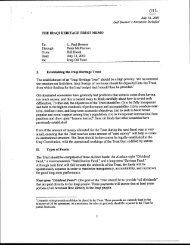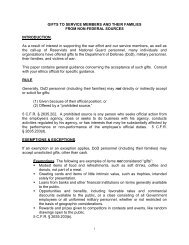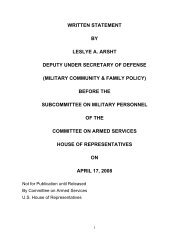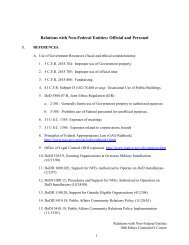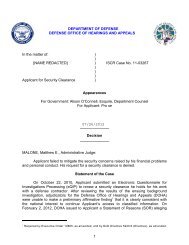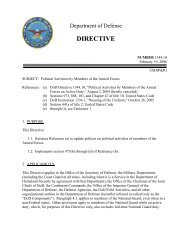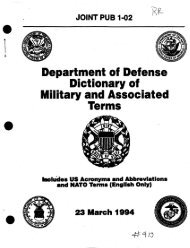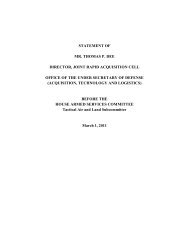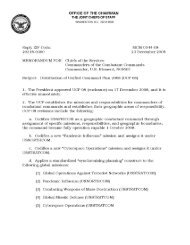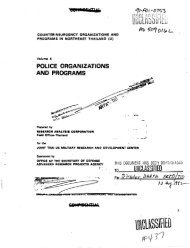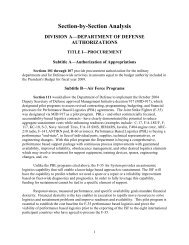dod tactical herbicide sites - United States Department of Defense
dod tactical herbicide sites - United States Department of Defense
dod tactical herbicide sites - United States Department of Defense
Create successful ePaper yourself
Turn your PDF publications into a flip-book with our unique Google optimized e-Paper software.
DOD TACTICAL HERBICIDE SITESSite 21Location: Fort Gordon, Augusta, GeorgiaFort Chaffee, Fort Smith, ArkansasApalachicola National Forest, Sopchoppy, FloridaDate → July 1967 – October 1967Activity Description: During the period December 1966 to October 1967, thenewly named “Plant Science Laboratories” at Fort Detrick initiated a comprehensiveshort-term project to evaluate desiccants and herbicidal mixtures as rapid-actingdefoliants. The objectives <strong>of</strong> this study were to evaluate rapid-acting desiccants asdefoliants and to assess the defoliation response <strong>of</strong> woody vegetation to mixtures <strong>of</strong><strong>herbicide</strong>s and/or desiccants. The criteria for assessment was based principally onrapidity <strong>of</strong> action, but included other features such as safety and ease <strong>of</strong> handling,compatibility with dissemination systems, and low toxicity to man and wildlife.The approach to the objective <strong>of</strong> an improved rapid-acting defoliant involved threephases: (1) evaluation <strong>of</strong> commercially available rapid desiccants or contact <strong>herbicide</strong>s;(2) evaluation <strong>of</strong> improved formulations <strong>of</strong> rapid desiccants developed under industrycontacts and by in-house effort; (3) development and evaluation <strong>of</strong> desiccant-<strong>herbicide</strong>mixtures containing the rapid defoliant characteristics with the sustained long-termeffects <strong>of</strong> Orange and other Tactical Herbicides. The project required an immediateaccess to a diversity <strong>of</strong> woody vegetation. Accordingly, Fort Detrick arranged for testlocations at Fort Gordon near Augusta, Georgia; Fort Chaffee near Fort Smith, Arkansas,and Apalachicola National Forest near Sopchoppy, Florida.The Georgia site was described as a warm temperate, humid, moderate rainfall climatewith deep, well-drained sands in rolling topography. The vegetation type was an oakhickory-pineforest. The Arkansas site was described as a temperate continental,moderate rainfall climate with fine sandy loam soils in rolling topography. Thevegetation type was an oak-hickory forest. The Apalachicola National Forest site wasdescribed as a subtropical, humid, moderate precipitation climate with sandy soils in aflat poorly drained topography. The vegetation type was described as a Southern mixedforest. All <strong>sites</strong> were selected because <strong>of</strong> their isolation from any local humanpopulations, e.g., in Florida, the site was a ridge located in a swamp forest.Assessment: The desiccants selected for evaluation included Herbicide Blue (a<strong>tactical</strong> <strong>herbicide</strong>), and the commercial desiccants diquat, paraquat, dinitrobutylphenol49



